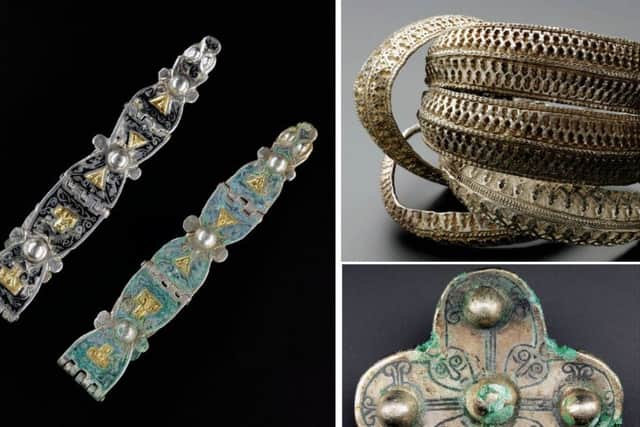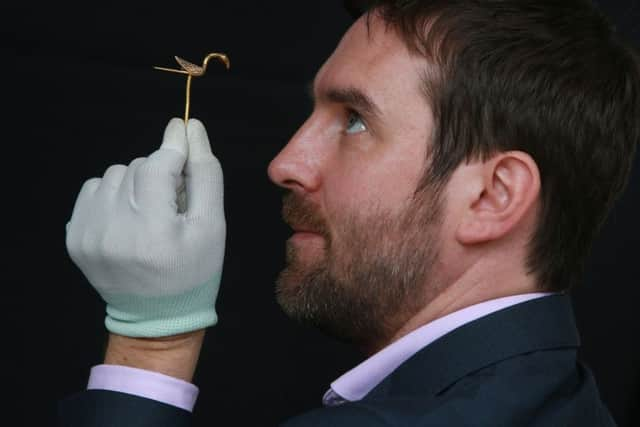Painstaking clean-up of Scottish Viking hoard unlocks new secrets
Growing evidence is emerging that the contents of the Galloway Hoard, which was discovered by a metal detectorist five years ago, have been drawn from across Europe and Asia
Tiny traces of linen, silk, wood and leather have been analysed during two years of detective work on the hoard has helped develop theories that some objects are several centuries older than previously thought.
Advertisement
Hide AdAdvertisement
Hide AdThe careful wrapping of more than 100 gold, silver and jewelled treasures is set to shed new light on how long it was accumulated for before being buried in Galloway nearly 1,000 years ago.


The hoard, secured by the National Museum of Scotland in Edinburgh for the nation after a £2 million fund-raising campaign in 2017, was hailed as “the richest collection of rare and unique Viking-age objects ever found in Britain or Ireland”after its discovery.
Dr Martin Goldberg, principal curator of archaeology and history, said the extensive conservation work had “completely transformed” the look of some objects and revealed new clues expected to shed light on previously-hidden connections between Britain, Europe and beyond.
He said: “We have a better understanding now of the international range of hoard. There were always clues about the origins of some of the material and the amazing trajectories that brought them across Europe and Asia to be buried in Galloway. But we are learning more about the specifics about where things have come from and how old various things might be and for how long the hoard may have been accumulated for. We’re sticking to AD 900 for the burial but some objects are looking like they are several centuries older.”
New images of restored treasures from the hoard have been revealed ahead of a major exhibition, which will open at the National Museum in 2020 then go on tour .


Goldberg added: “We know how many hard objects there were in the hoard, but we are still dealing with an unknown quantity of textiles. Some objects were wrapped in multiple layers of material. We’re still working on identifying how many there were and what different types of material were in the hoard.
“But we know there is silk, linen, wood and leather. The range of organic materials in the hoard is very unusual.
Advertisement
Hide AdAdvertisement
Hide Ad“We’re used to seeing hoards of gold and silver, but we’re just not used to seeing that kind of preservation.
“We’ve been doing all kinds of things as part of the conservation work over the last couple of from basic swabbing to X-rays and CT scanning. We’re able to get a different understanding of the different densities of material in each object, and a different understanding of how each object was made and what has happened to it since then.
“Sometimes we’re looking at an object that is corroded that has important information in the layers of corrosion that tell you something about what it was next to or the things that was about it. Rather than just clean the corrosion off we have to record it as carefully as possible because it is preserving minute traces of information. We’ve found potential traces of embroidered silk which is only preserved in green corrosion on objects.
“We will eventually be doing radio carbon dating to produce a chronology for all these materials. It’s an unfolding story. We want to come up with a biography for each object, from its origin to how it was used to when it was deposited in the ground and then tie the 100 stories together.”